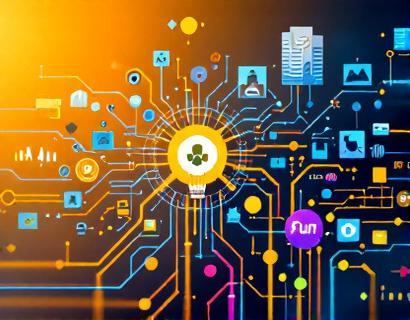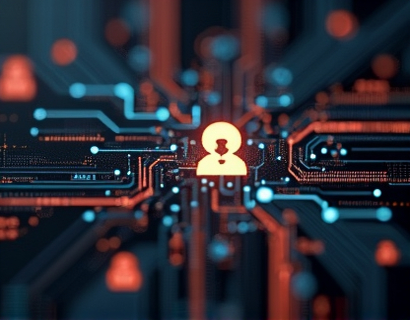Transforming Education with AI-Powered Chatbots: A Comprehensive Guide for Students, Families, and Educators
The integration of Artificial Intelligence (AI) in education has opened new avenues for personalized learning, efficient information retrieval, and enhanced engagement. Among the various AI applications, educational chatbots stand out as a revolutionary tool, offering specialized insights to students, families, and educators. This article delves into the capabilities and benefits of AI-powered educational chatbots, focusing on how they provide industry-specific knowledge and services while ensuring a safe and educational experience for all users.
The Role of AI Chatbots in Education
AI chatbots are designed to simulate human-like conversations through natural language processing (NLP) and machine learning algorithms. In the educational sector, these chatbots serve as virtual assistants, providing instant answers to queries, guiding students through learning materials, and offering personalized feedback. For students, chatbots can be a constant source of support, available 24/7 to clarify doubts and enhance understanding. For families, they offer insights into their children's progress and areas needing improvement. Educators can leverage chatbots to streamline administrative tasks, focus on teaching, and provide targeted interventions.
Specialized Insights for Students
One of the primary benefits of AI chatbots in education is their ability to deliver specialized insights tailored to students' needs. These chatbots can provide detailed explanations of complex concepts, step-by-step problem-solving guides, and additional resources for deeper learning. For instance, a student struggling with advanced mathematics can interact with the chatbot to get a breakdown of a particular theorem or algorithm, complete with visual aids and practical examples. This personalized approach ensures that each student receives the support they need to grasp difficult topics.
Moreover, AI chatbots can adapt to the learning pace of individual students. By analyzing user interactions, the chatbot can identify areas where a student may be lagging and offer additional practice exercises or recommend relevant learning materials. This adaptive learning experience not only boosts confidence but also helps in building a strong foundation in various subjects.
Industry Knowledge for Future Professionals
For students looking to explore specific industries, AI chatbots provide a wealth of information on current trends, job roles, and required skills. By engaging with the chatbot, students can gain insights into various sectors such as healthcare, technology, finance, and more. The chatbot can offer data-driven analyses, case studies, and real-world examples that help students understand the practical applications of their studies. This industry-focused knowledge is invaluable for students planning their career paths and preparing for the workforce.
Additionally, AI chatbots can facilitate connections with industry professionals through networking opportunities and mentorship programs. By leveraging its network, the chatbot can introduce students to experts in their fields of interest, providing mentorship and guidance that can significantly impact their professional development.
Ensuring Content Verification and Safety
A critical aspect of using AI chatbots in education is ensuring the accuracy and reliability of the information provided. Misinformation can lead to misunderstandings and hinder the learning process. To address this, the chatbot employs rigorous content verification processes. All information is cross-referenced with credible sources, including academic journals, official publications, and expert opinions. This multi-layered verification ensures that students, families, and educators receive accurate and up-to-date knowledge.
Moreover, safety is a paramount concern, especially when it comes to children and young students. The chatbot is designed with strict safety protocols to create a secure and child-friendly environment. All interactions are monitored to prevent inappropriate content or behavior. The chatbot adheres to strict privacy policies, ensuring that user data is protected and not misused. For younger users, a child version of the chatbot is available, which filters content to be age-appropriate and includes additional safety features such as parental controls and reporting mechanisms.
Enhancing Educational Experiences with AI Chatbots
The integration of AI chatbots in educational settings can significantly enhance the learning experience. For students, the chatbot serves as an interactive tutor, providing immediate feedback and support. This real-time interaction can boost engagement and motivation, making learning more enjoyable and effective. For example, a student working on a science project can ask the chatbot for information on a specific topic, receive instant answers, and even simulate experiments to better understand the concepts.
For families, the chatbot offers a valuable tool to stay informed about their children's educational journey. Parents can use the chatbot to track their child's progress, receive recommendations for additional learning resources, and get tips on how to support their child's education at home. This level of involvement can strengthen the home-school connection and foster a more supportive learning environment.
Educators can also benefit from AI chatbots by streamlining administrative tasks such as grading, attendance tracking, and communication with parents. By automating these tasks, teachers can focus more on teaching and providing personalized attention to students. Additionally, chatbots can assist educators in identifying learning gaps and developing targeted interventions to help students overcome challenges.
Subroutine Services and Industry Insights
In the context of specialized services, AI chatbots can provide in-depth information on various subroutine processes and industry-specific knowledge. For instance, in the healthcare sector, a chatbot can offer detailed explanations of medical procedures, patient care protocols, and the latest research findings. This level of detail is crucial for students and professionals seeking to deepen their understanding of complex medical topics.
In the technology industry, chatbots can provide insights into emerging trends such as artificial intelligence, blockchain, and cybersecurity. They can guide users through the fundamentals of these technologies, highlight key applications, and discuss potential career opportunities. By staying updated with the latest industry developments, students and professionals can better position themselves in a rapidly evolving job market.
Child-Friendly Features and Educational Value
For younger learners, the chatbot is designed with features that make learning both safe and engaging. The language used is simplified and age-appropriate, ensuring that children can easily understand complex concepts. Interactive elements such as quizzes, games, and visual aids are incorporated to make the learning process more enjoyable. For example, a chatbot designed for elementary students can turn a history lesson into an interactive story, where children can ask questions and receive immediate responses, enhancing their retention and interest in the subject.
Furthermore, the chatbot can be programmed to adhere to educational standards and curricula, ensuring that the content aligns with what students are learning in class. This alignment helps reinforce classroom learning and provides a comprehensive educational experience.
Conclusion
The integration of AI-powered educational chatbots represents a significant advancement in the way we approach learning. By providing specialized insights, ensuring content verification, and creating safe environments, these chatbots offer immense value to students, families, and educators. As technology continues to evolve, the potential for AI chatbots in education is vast, promising a future where learning is more personalized, accessible, and effective. Embracing this innovation can lead to improved educational outcomes and a more informed society.











































